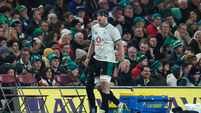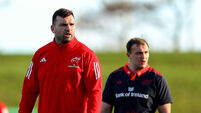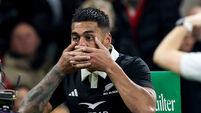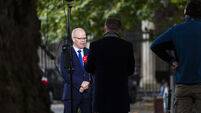A November to remember: let’s celebrate the good in international rugby

IRISH FIGHT: Hooker Dan Sheehan goes over for Ireland's try on Saturday against the power-packed Sringboks. Pic: Paul Faith/AFP via Getty Images
South Africa and Ireland played out a slugfest for the ages and the discourse has been dominated by yellow cards and flying shoulders to the head. England held off a spirited Argentina to claim their 11th consecutive Test win and it seems all anyone can talk about is some alleged after-the-whistle shoving. Wales and New Zealand traded 11 tries in a ding-dong encounter and yet the narrative is weighed down by caveats concerning fading empires.
What, exactly, is the point of Test rugby? Beyond winning World Cups and regional crowns, does this chaotic sport hold any value? A bit of spice elevates almost every dish, sure, but it has felt as if this autumn’s brilliant rugby fare has been smothered in a sauce with a needlessly high Scoville count.
So, for all the romantics, for anyone inclined to see their incomplete pint of Guinness as half full, for those who believe that elite rugby has never been more entertaining or more competitive or more interesting, let’s turn the dial towards whimsy and revisit some of the moments that made this autumn irresistible.
An obvious jumping off point is the Springboks’ pack. Even without Ox Nché, the first prop to be nominated for World Rugby’s player of the year award, and Frans Malherbe, arguably the most formidable tighthead of the past six years, that hefty mass in green pulverised the Irish in Dublin. Two Irish front-rowers were yellow-carded as their scrum conceded six penalties and one penalty try. This was rugby reduced to its purest concentrate, its base ingredients on show as coach Rassie Erasmus finally claimed a win on these shores.
If South African beef is not to everyone’s taste how about a bit of French fizz out wide? After taking a beating by the Boks at the start of the month, Les Bleus found their mojo as the autumn developed. Against Australia, Louis Bielle-Biarrey added another highlight to his collection with an audacious chip-and-chase finish. Later on, Kalvin Gourgues, with his first touch in Test rugby, scythed through the Wallabies’ midfield, cantered 50 metres before unfurling a precise pass for Bielle-Biarrey on the left wing. The French production line appears to be thrumming along at full throttle.
So too is England’s. Max Ojomoh was magnificent against the Pumas, scoring an opportunistic try and setting up two more – one with an inch-perfect cross-field kick from first receiver, the other a delicious little offload as he tumbled to the floor. Speaking after the game, the 25-year-old was ebullient, offering a juxtaposition to the post-match nastiness that marred the occasion. “I’ve been waiting for the opportunity for so long,” he beamed. Even the most vehement Anglophobe would have felt a pang of goodwill towards him.
Not that England would have won over many neutrals across the autumn but that’s primarily because they have become such a threat. The strategy seems simple and relies heavily on the composure George Ford brings at fly-half and the belligerence they’ve shown when contesting high kicks, but it is ruthlessly efficient. Steve Borthwick turned a faltering Leicester Tigers into a winning machine through cold, meticulous method. Every carry was accounted for, every kick intentional. No need to whisper it, he’s clearly doing the same with England.
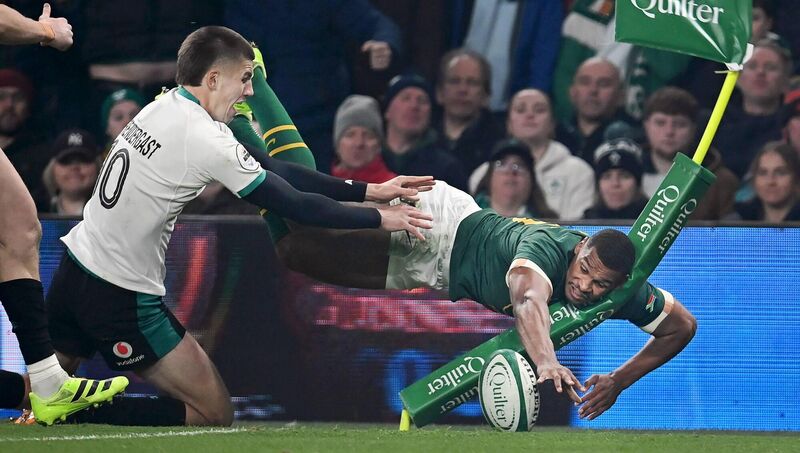
The three leading teams in the world are the ones stacked with the most depth. The French Top 14 is a factory of talent and seemingly endless cash reserves. England and South Africa can rely on conveyor belts of their own. As the game becomes even more of an attritional battle, where “Bomb Squads” and “Pom Squads” compete for supremacy in what is now fashionably referred to as Q4 (the final 20 minutes for those not perennially online), there is a looming worry that some teams with less in reserve might struggle.
Which is why New Zealand’s Fabian Holland winning breakthrough player of the year came as welcome relief, not just to All Blacks supporters nervously scanning for signs that their halcyon days are truly behind them, but also for the rest of us who enjoy the theatre of rugby sprinkled with its familiar archetypes.
The 23-year-old looks like he was chiselled from the rocks of Port Hills for this precise purpose despite not being born in New Zealand, having moved there from the Netherlands to pursue his rugby dream at 16. Nonetheless, oversized mitts, granite features and quietly spoken demeanour seem plucked straight from central casting, like Colin Meads and Brodie Retallick before him. There is something reassuring in seeing New Zealand bring through yet another lock who appears capable of felling a tree by staring at it.
One of rugby’s charms is that certain teams are defined by certain traits but there is also appeal in those who break the mould. The rise of Sacha Feinberg-Mngomezulu has challenged a few stereotypes in South Africa. With a Zulu mother and a Jewish father, he has become an emblem of a new generation. Like England’s Henry Pollock, he is abrasive and cocky, and has put a few conservative noses out of joint. A sport that has long cried out for personalities that challenge convention is suddenly blessed with two who are eager to lead the way.
Next year, all notion of a friendly in Test rugby will disappear. The upcoming Nations Championship will give every game meaning. Every collision will serve log points and standings on a table. But we’ll lose something in the process – that carefree joy that made this autumn such a tonic, if only we’d stopped grumbling long enough to notice.





